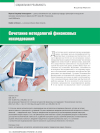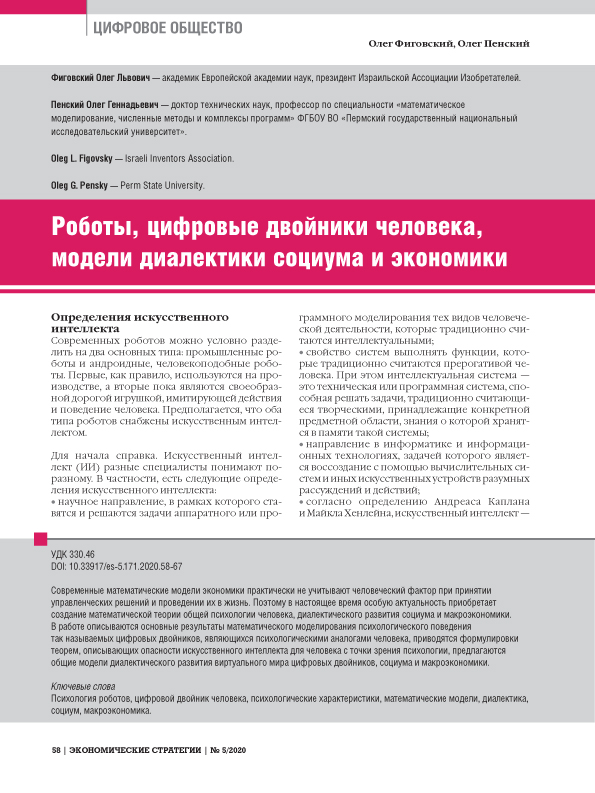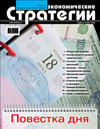Combination of Financial Research Methodologies
DOI: https://doi.org/10.33917/es-5.185.2022.132-137
The article analyzes mathematical modeling as a methodology for the study of finance, which today is quite limited and outdated. The directions of the introduction of additional methodology in the field of finance — behavioral science are studied. The behavioral methodology is revealed for: predicting the reaction of investors; considering the general question of how financial markets help the country in allocating resources and ensuring long-term economic stability; contributing to improving the process of making financial and investment decisions. The usefulness of introducing behavioral models into financial science is substantiated, which in combination with mathematical modeling will allow for significant updates in this area.
References:
1. Bukhvalov A.V., Okulov V.L. Klassicheskie modeli tsenoobrazovaniya na kapital’nye aktivy i rossiiskii fondovyi rynok. Chast’ 1. Empiricheskaya proverka modeli CAPM [Classic Pricing Models for Capital Assets and the Russian Stock Market. P. 1. Empirical Verification of the CAPM Model]. Nauchnye doklady, 2006, no 36 (R). Saint Petersburg, NII menedzhmenta SPbGU.
2. Semenkova E.V. Operatsii s tsennymi bumagami [Operations with Securities]. Moscow, Poisk, 2005, p. 374.
3. Zaleznik A., Christensen S.R., Roethlisberger F.J. Motivation, Productivity and employee Satisfaction. Boston, Harvard University Graduate School of Business Administration, 1958.
4. Fama E., Miller M.H. Theory of Finance. Hinsdale, Dryden Press, 1972.
5. Simon H.A. Rationality as Process and as Product of Thought. Richard T. Ely Lecture. American Economic Review, May, 1978, vol. 68, N 2, pp. 1–16. American Economic Association, 1978.
6. Herzberg F. Work and Human Nature. New York, World Publishing Co., 1966.
7. Maslow A. Motivation and Personality. New York, Harper & Bros, 1954; 1987.
8. Fourier J.B.J. The Analytical Theory of Heat, quoted in Herbert A. Simon’s book “Human Models”. New York, John Wiley & Sons, Inc., 1957.
9. Filer R., Maytal Sh., Simon J. “Risk Taking and Risk Aversion: A Stock Market Simulation Game”, unpublished paper read at the Eastern Financial Association Spring Meeting. April 21, 1979. Washington, DC.
10. Ash S.E. Opinions and Social Pressure: Readings in Management Psychology. Ed. Harold J. Leavitt and Louis R. Pondy. Chicago, University of Chicago Press, 1964, pp. 304–314.
11. Friedman M., Savage L.J. An Analysis of the Utility of Risk-taking Choices. Journal of Political Economy, August, 1948, pp. 279–304.






